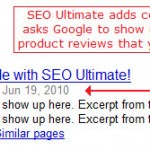There are four phases or rather steps that an SEO campaign progresses through in order to reach its ultimate ranking objectives. We have outlined them briefly below and provided tips to maximize traction along the way.

SEO Tips to Maximize Your SEO Campaign
The four critical steps in a managing a successful SEO campaign are (1) Research – both market and keyword driven (2) Preparation (3) Keyword Acquisition and (4) SEO Defense.
Research:
Research is critical prior to investing time, money or energy. Optimizing the wrong keywords results in frustration and disappointment; optimizing the right keywords and tracking results to reveal other conversion paths can generate months or years of passive income and conversion.
The first consideration is the barrier to entry and the competitiveness of the space. This determines which tact, SEO method and strategy utilized – as well as the consideration of budget and time are the prime denominators.
Targeting keywords within your reach is imperative until your pages and website gain traction and can target and acquire other lucrative stemmed keyword variations.
If you can scale relevant content based on topical keywords that consumers use within a market, you can stand in front of traffic with your funnel and direct ample percentages of that traffic based on the site and page authority your website gains over time.
Finding the volume then adapting is better than trying to force relevance by over-optimizing or cannibalizing keywords from excessive redundancy.
There are various methods for keyword research (Vertical Online Market Analysis, Suggestions from Related Search, Google Trends and using Google’s Adwords Keyword Suggestion Tool). Once you have your master list, its time to start the content creation and execution phase of the campaign.
Preparation:
Preparation is everything when it comes to search engine optimization to facilitate conversion. This step determines just how pliable your tactics are in the face of competition. If it does not produce results, then it’s not SEO.
Things to avoid – content management systems that do not allow you to personalize individual pages, url structures, meta data or adjust internal links as well as content management systems that add additional parameters in the URL that reduce on page relevance.
What you need to optimal SEO is clean, crisp output for on page signals which means (a) Relevant page-specific titles and meta data (b) 400-750 words on a page in the body area (c) properly tiered navigation (d) sufficient internal links using keyword-rich anchor text and (e) a deep link strategy (to get links to important pages in your website).
Keyword Acquisition:
After mapping out which keywords you target first, its time to execute those strategies. Each keyword has a tipping point (based on the site subject, volume of content and how many internal and external links you build to each individual page) determine how fast you cross that tipping point and start driving relevant traffic to your web property.
Creating correlations in content and site architecture are the fastest method for reaching first page rankings for various keyword clusters and semantic phrases.
The content signature creates the foundation for your websites topical footprint, which in turn garners online traffic based on those keywords. The amount of time to scale the search engine result pages depends on the competing pages and the authority of the competition.
Once you acquire a top 10 or top 3 ranking, you will need to utilize SEO defense to ensure your position remains buoyant (as your page is the new target for competition to overthrow).
SEO Defense:
Once you reach your ranking objectives, you will have a target on the back on your website for competitors, this means you will need to practice SEO defense. Keep in mind, your competition will use every SEO tool available to parse, analyze and dissect your on page and off page strategy, which is why you have to integrate layers into your SEO approach.
For defense, consider (a) link velocity and (b) content development. Link velocity is the rate in which you gain or lose links. Coupled with content volume, post frequency and internal linking you can supply your pages with an indefinite supply of fresh link flow to keep rankings buoyant.
Also, staggering a drip-down link acquisition strategy (such as using article syndication, blog carnivals or RSS feeds) can add weight to pages that if left to their own cycles would simply rank then fade away.
An earmark of importance directly correlates to the link graph and how many outside sources (from unique domains) are linking to your website and its individual pages.
If your keyword / page is competitive, then consider getting an additional 5-20 fresh links in month one, 25-45 fresh links in month two and gradually increasing the quality or volume of links to those pages (to offset your competition).
There are various factors for link metrics, such as the number of outbound links on the page providing the link, the authority of the domain, the authority of the page, whether or not the link is trusted, themed or relevant, etc.
However, the main consideration is to stave off link attrition from neglecting pages from defending themselves from lack of fresh or relevant links.
If you would like to receive additional FREE SEO Tips, tactics and techniques to distinguish your website in search engines, then visit SEO Design Solutions Blog or subscribe to our RSS Feed.









Excellent site – Thank you for providing such a great resource. I will definitely link to your site from my home page.
Regards,
Bradley Holton.
thanks for this great article.
thanks
Cheers…….
There are s
There are so many great articles.
Thank you for providing such a great resource. I will definitely bookmark your site.